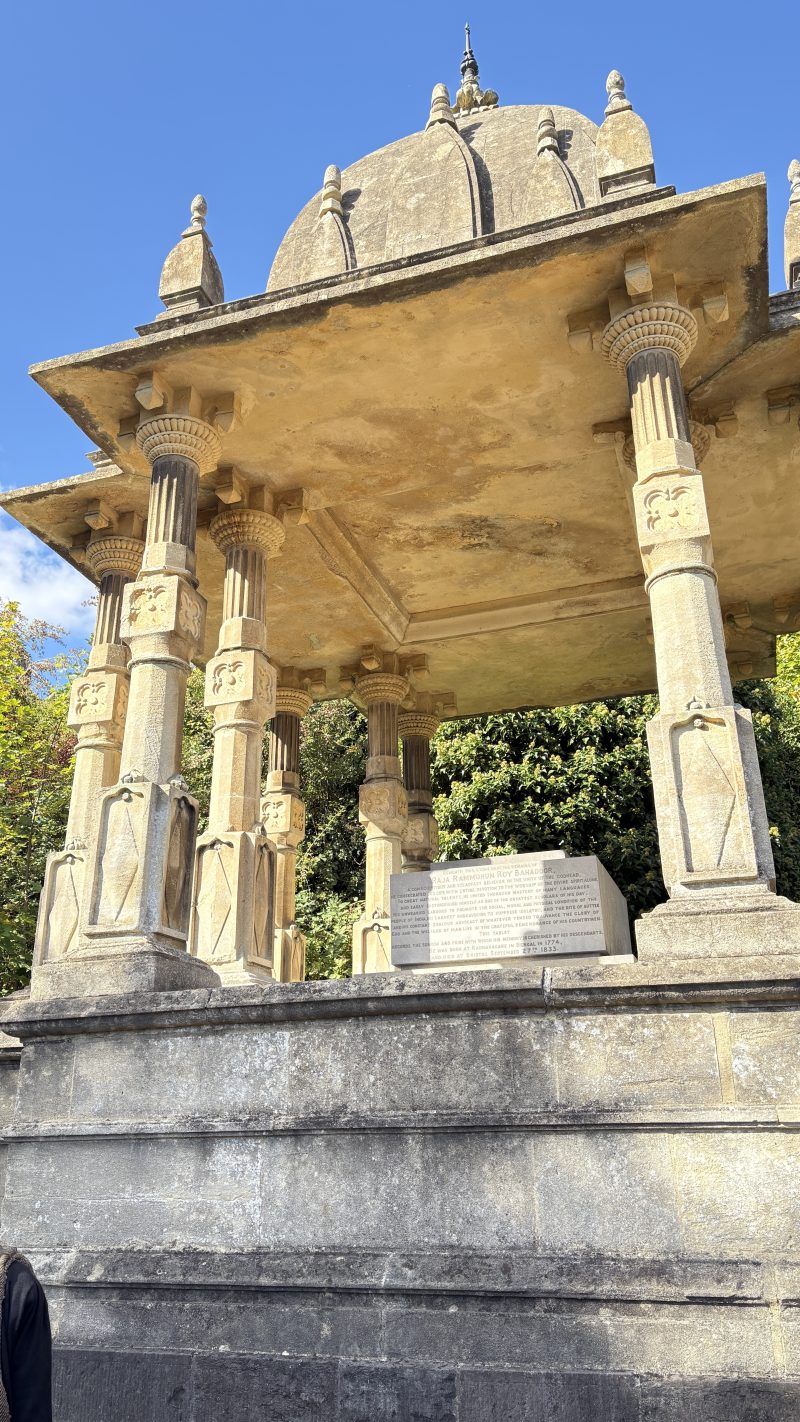News / Events
Commemorating Raja Rammohun Roy’s time in Bristol
Several colourful bouquets were neatly laid at the foot of Raja Rammohun Roy’s tomb in Arnos Vale Cemetery as part of a yearly tradition to commemorate the visionary thinker’s connections with Bristol.
The Indian reformer and writer was visiting old friends, the Carpenter family at the Beech House in Stapleton, when he sadly succumbed to meningitis on September 27 1833.
Dignitaries from Bristol and beyond attended the commemoration on Sunday, with some singing songs and others sharing anecdotes and lessons in reverence of the reformer.
is needed now More than ever

Raja Rammohun Roy’s coffin is buried seven feet underground in a vaulted brick chamber
“I actually feel indebted to Raja Rammohun Roy”, said Manoshi Barua, who was in Bristol to represent the London Brahmo Samaj.
Speaking to Bristol24/7, she added: “Raja Rammohun Roy did so much for women, because women were so oppressed at that time.
“He fought tirelessly to eradicate the barbaric practice of sati. He actually fought for the education of women, the empowerment of women.”
In 19th-century India, wives were expected to voluntarily jump into their funeral pyre of their deceased husbands, as part of the Hindu practice of Sati. Roy was at the forefront of a movement that ultimately abolished this practice through the implementation of the Bengal Sati Regulation.
In his final moments, Roy expressed his desire to be buried in a freehold land, so he did not lose his caste and his children could have their share of inheritance.
Mary Carpenter, whose family Roy resided with in his final days, reflected on this wish of his in her book, The Last Days of Rajarammohun Roy in Bristol: “Rajah had repeatedly expressed the wish that, in case of his dying in England, a small piece of freehold ground might be purchased for his burying place, and a cottage be built on it for the gratuitous residence of some respectable poor person, to take charge of it.
“Every difficulty, however, was removed by the offer of Miss Castle, in which she had the warm accordance of all her intimate friends, to appropriate to the object a beautifully adapted spot, in a shrubbery near her lawn, and under some fine elms.
“There this revered and beloved person was interred, on the 18th of October, about 2pm.”
Roy was then reinterred at Arnos Vale Cemetery eight years later in a non-consecrated area for Dissenters, where he now rests peacefully. His tomb, Rajah’s Chattri, is tall and easily visible from the cemetery’s entrance on Bath Road.
Chief Executive of Arnos Vale Cemetery, Ann Fiddler, said: “Rajah Rammohun Roy was a true visionary and reformer whose work resonates across generations and continents.
“We are proud to honour his memory here in Bristol, where he spent the final chapter of his extraordinary life. His grave at Arnos Vale continues to draw visitors from around the world, and this annual event is a powerful reminder of his enduring legacy.”
View this post on Instagram
All photos: Karen Johnson
Read next:
 Our newsletters emailed directly to you
Our newsletters emailed directly to you




















